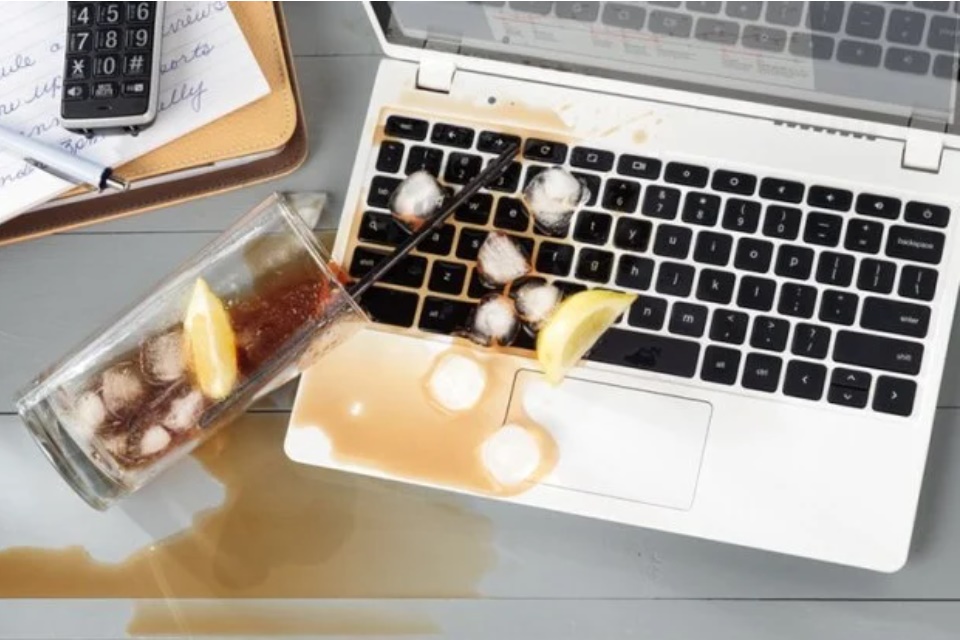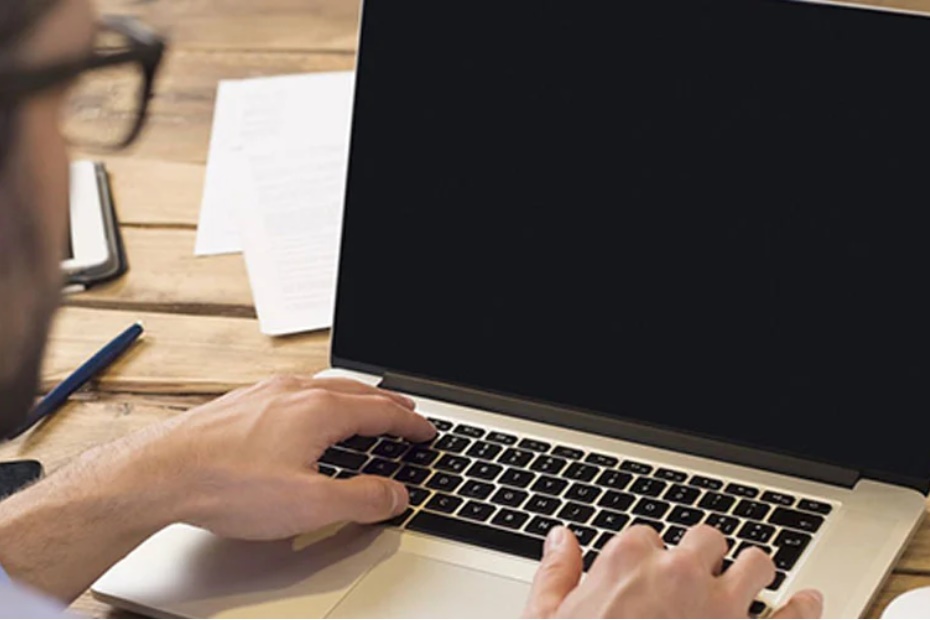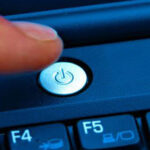Turn Off Your Laptop and Unplug the Power Source
The first thing to do when your laptop gets soaked is to quickly turn it off by pressing the power button and unplugging the power cord to prevent electrical short circuits that could lead to explosions or damage to your laptop.

Move Your Laptop Away from Liquids
Doing so will minimize further exposure to liquids and reduce the risk of electrical shocks.
Flip Your Laptop Over and Remove the Battery, if Possible
It is advisable to turn your laptop upside down and, if possible, remove the battery. However, some laptops and MacBooks have non-removable batteries.
Unplug All External Hardware
Remove all external hardware devices, including:
USB devices (flash drives, wireless adapters, chargers, etc.)
Mouse
Laptop power cord
Memory cards
Place Your Laptop Upside Down on a Flat Surface with a Towel
Position your laptop at a 45-degree angle and then place it upside down on a flat surface covered with a highly absorbent towel. This will help drain any remaining liquid from the laptop and speed up the drying process. You can also use a fan or a cold hairdryer to accelerate drying.
Wipe Down the Laptop to Remove Any Liquid
Use a cloth to wipe down the laptop’s exterior, including the front, back, casing, and keyboard, while keeping it upside down to prevent liquid from seeping back inside. You can also use hand sanitizer to easily clean the laptop’s screen.
Discharge Static Electricity Before Touching Internal Components
Before touching any internal components, such as the RAM or hard drive, ensure that you have discharged any static electricity from your body. Otherwise, you risk causing electrostatic discharge damage to the laptop’s circuitry.
Disassemble Hardware Components if You’re Comfortable Doing So
We do not recommend disassembling hardware components unless you are familiar with the process or have done it before. Instead, take your laptop to a repair center for timely disassembly and repairs.

Dry the Internal Components of the Laptop
Use a small, absorbent cloth to gently wipe away any remaining moisture from the laptop’s interior. Be very gentle to avoid causing any damage.
Clean and Remove Any Dried Residue
Use a small cloth or compressed air to clean any dried residue or dirt from the laptop’s interior.
Allow the Laptop to Dry for at Least 24 Hours Before Reassembling
Give your laptop at least 24 hours to dry completely before reassembling it. Ensure that the storage area is well-ventilated and dry. Do not use a hot hairdryer, as the heat can further damage the internal components. Instead, opt for a cold hairdryer or let it air dry.
Source: Khoevadep
Instant Laptop Rescue: Water Damage Repair to Save Your Device
Oh no! Spilling liquid on your laptop can be a heart-stopping moment. If this happens to you, don’t panic. There are steps you can take to minimize the damage and increase the chances of your device surviving this accident. Stay tuned to find out how to handle this tricky situation and save your precious machine.


































